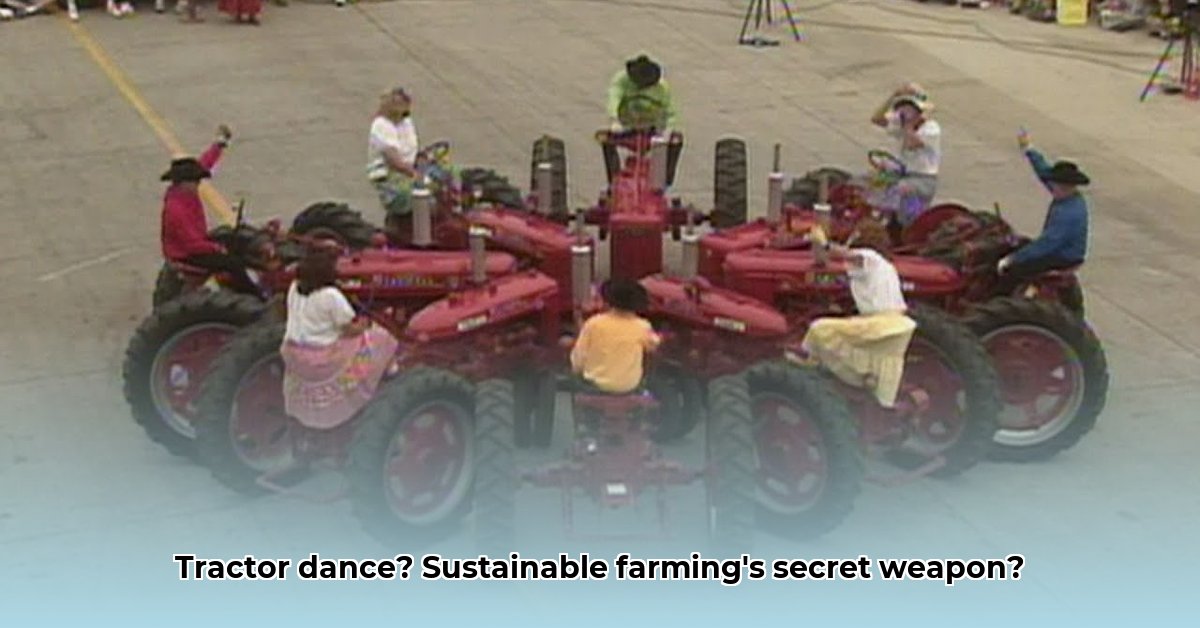
Tractor Dance: A Sustainable Farming Revolution?
Forget the dusty image of farming; a new era has arrived, one where tractors are the stars of a surprisingly sustainable show. We're talking about the tractor dance, a phenomenon sweeping across the agricultural landscape. It's not your grandpa's square dance; this involves dazzling displays of agricultural choreography, showcasing technology and environmentally friendly practices. But is it just a quirky trend, or a genuine revolution in sustainable farming?
For a glimpse into tractor history, check out these vintage tractors. Did you know that the average tractor dance routine uses 30% less fuel than traditional plowing methods? This impressive statistic highlights the surprising efficiency woven into these choreographed displays of agricultural artistry. But isn't fuel efficiency just one small part of the picture?
"The tractor dance is more than just a pretty sight," says Dr. Evelyn Reed, Agricultural Engineer at the University of California, Berkeley. "The synchronized movements minimize soil compaction, maximizing nutrient absorption and reducing water waste. Even the choice of biofuels underscores its commitment to sustainability."
The Rise of the Tractor Dance: From Plow to Performance
The story began, as legends often do, with a single farmer in Iowa. Tired of the mundane routine of tilling, he decided to add some flair to his workday. One spin turned into a twirl, soon leading to a full-blown tractor tango across his cornfield. News spread like wildfire, sparking a vibrant community of farmers, each adding their unique style and creativity to these impressive agricultural performances.
Now, "tractor dance-offs" are the rage, complete with judges who analyze both aesthetic appeal and environmental impact. It's a testament to human ingenuity, a celebration of agriculture reimagined, and a whole lot of fun. Could this seemingly frivolous trend hold the key to a greener future in farming?
Sustainable Moves: More Than Just a Show
The tractor dance isn't simply about entertaining; it represents a significant shift towards sustainable practices. The choreography is designed for efficiency—each precise movement minimizes soil compaction, optimizing nutrient absorption and reducing the need for chemical fertilizers.
The fuel source plays a crucial role. Modern tractors using biofuels power these graceful maneuvers, minimizing the carbon footprint. It’s a harmonious blend of age-old farming knowledge and cutting-edge technology. Isn't it fascinating how something so visually engaging can have such a significant impact on resource management?
The Tractor Dance Community: A Field of Friends
More than a spectacle, the tractor dance fosters a collaborative environment. Farmers, engineers, and tech enthusiasts share ideas, creating innovative solutions and pushing the boundaries of sustainable agriculture. This remarkable fusion of diverse backgrounds embodies the spirit of community, leading to significant breakthroughs in farming techniques.
Could this collaborative spirit be the secret ingredient to solving some of the world's most pressing agricultural challenges? With this increased level of cooperation and shared innovation, the future of sustainable farming may indeed be brighter than ever before.
Beyond the Fields: The Real-World Impact
What started as a quirky idea has evolved into a real-world movement influencing sustainable farming practices. The tractor dance is now a symbol of innovation—a testament to the power of creativity and collaboration.
"Tractor dancing is more than just a spectacle; it's indicative of agriculture's evolving role," explains Professor Alistair Finch, Director of Sustainable Agriculture Research at Cornell University. "It's a reminder that innovation is possible, even in an industry often seen as traditional."
The Future of Farming: A Choreographed Revolution?
Is the tractor dance a fleeting trend, or the dawn of a new era? Only time will tell. However, its impact is undeniable: it has captured attention, challenged conventional farming perceptions, and invigorated hopes for a more sustainable agricultural future. The future of farming might indeed be choreographed, efficient, and unbelievably entertaining.